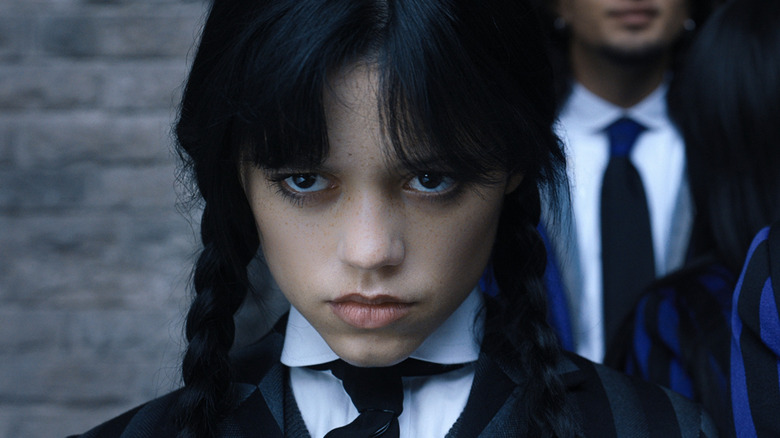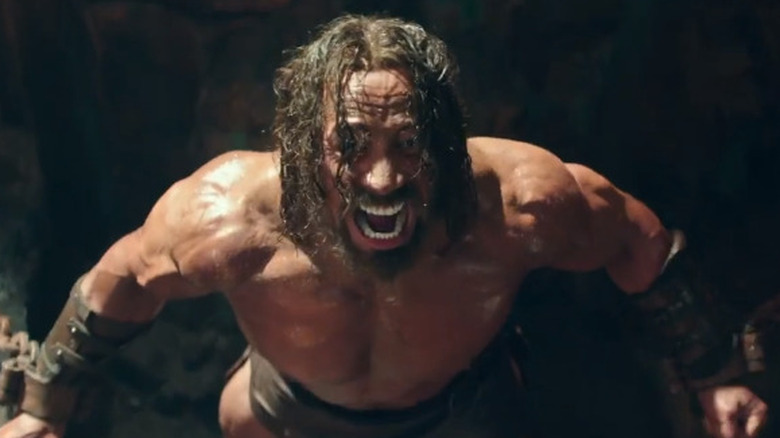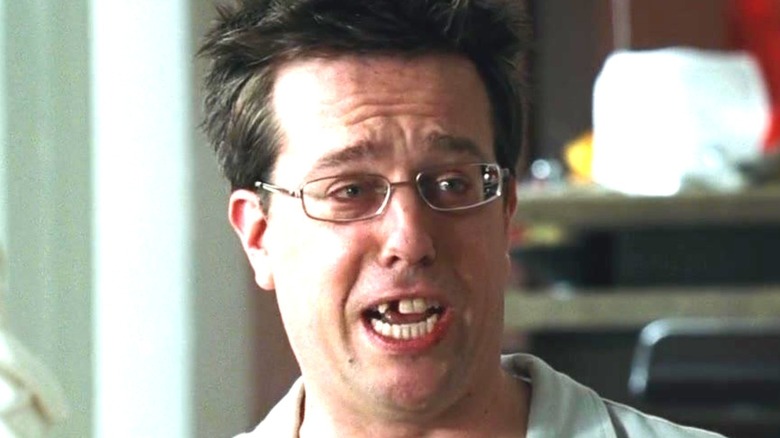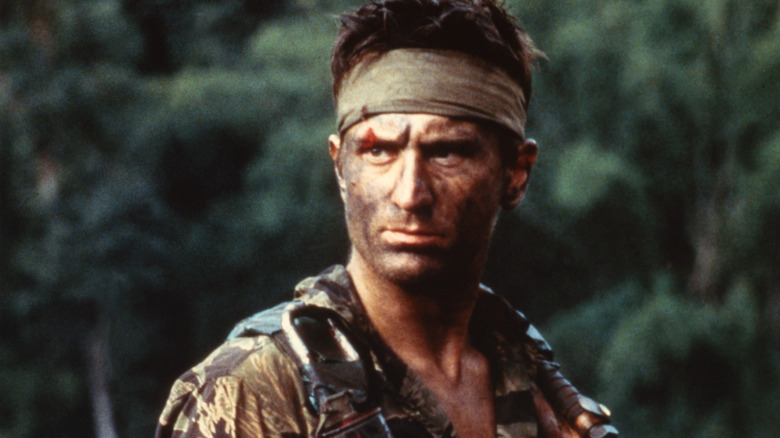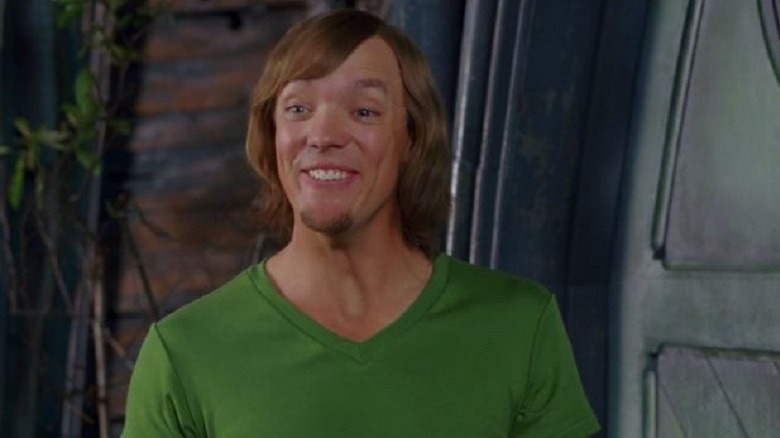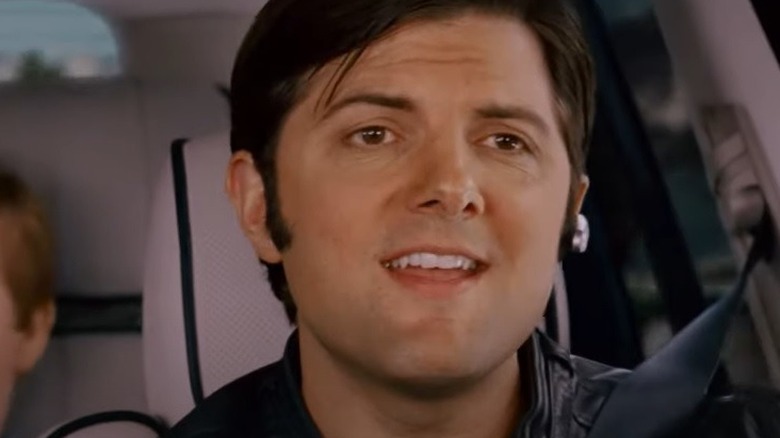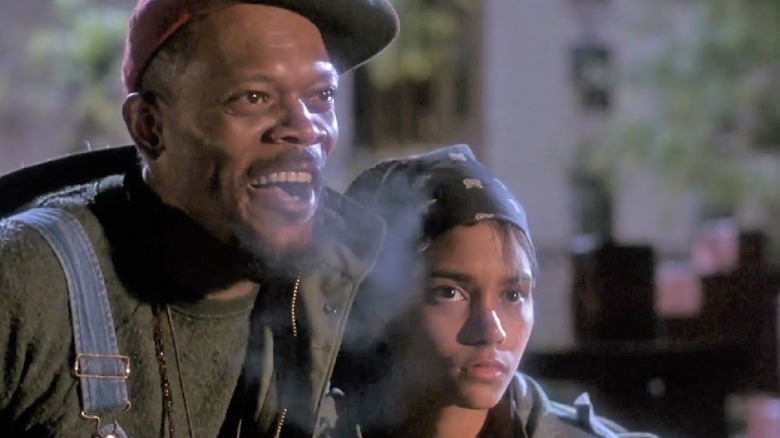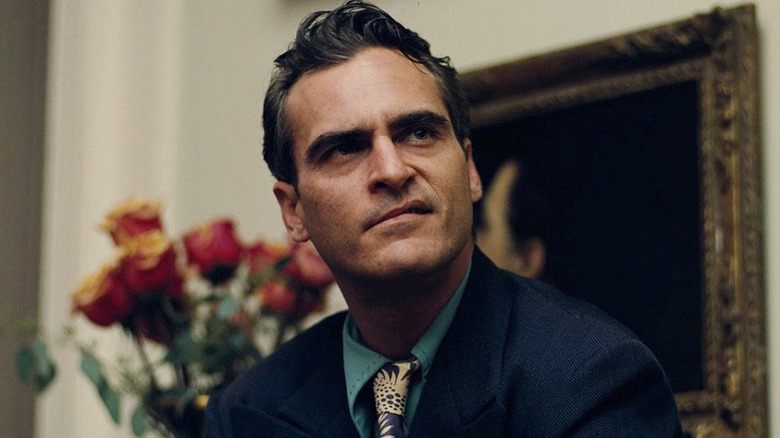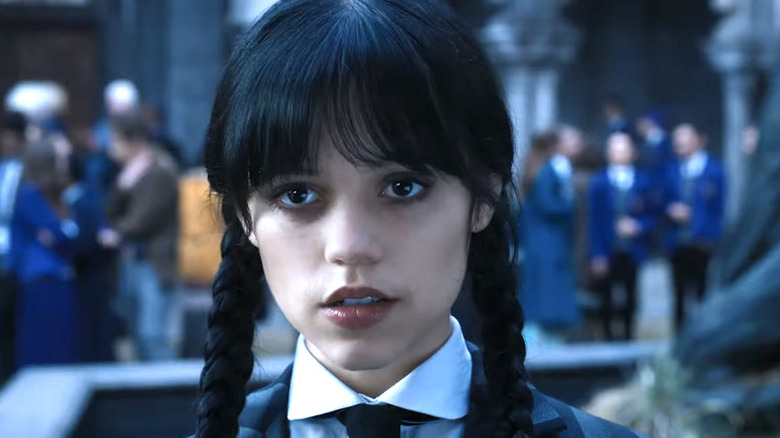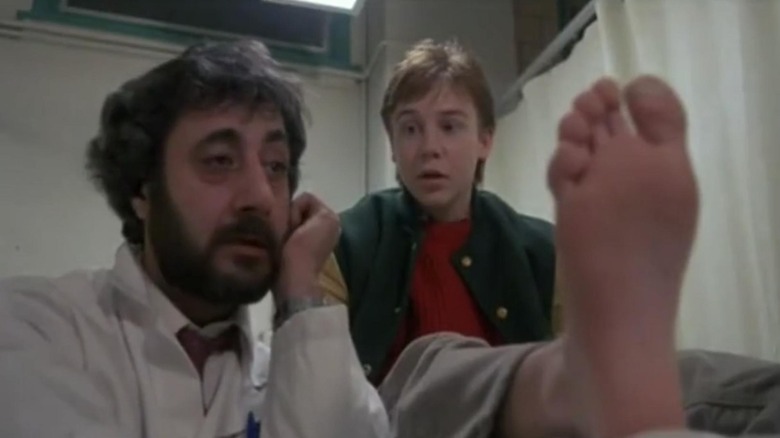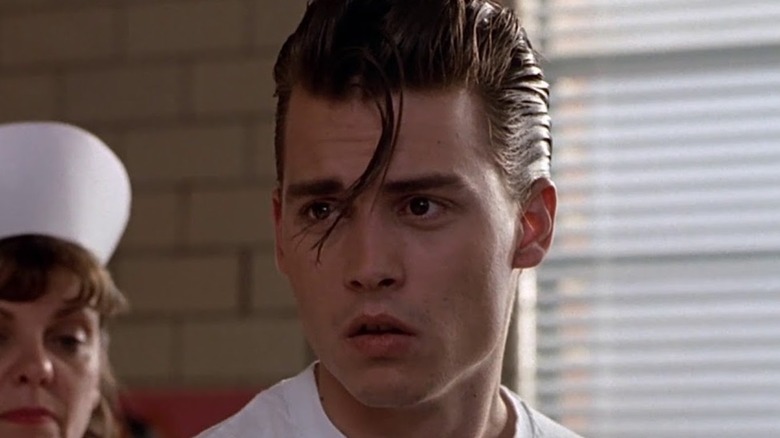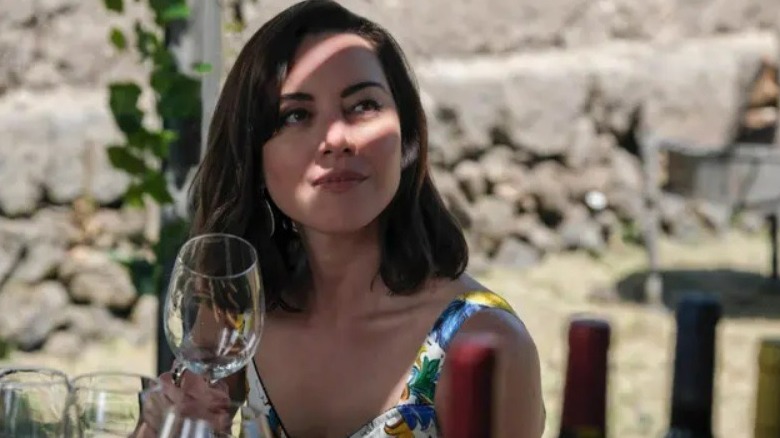Genius Tricks Actors Use To Look Convincing On Screen
When you really get down to it, an actor's ultimate job is to fool the audience. Sometimes they are trying to fool us into thinking they are somebody different altogether, while other times it's a little more subtle and they are only attempting to deceive us on a specific aspect of a character. At the end of the day, it comes down to their pure acting talent whether or not they are successful in that deception — but sometimes they reach into their bag of tricks for a little extra help.
What unites all of the examples in this feature is that the idea came either entirely or at least partially from the actor's own brain, rather than it being written into the script or otherwise mandated by a director or other crew member. And none of it involves digital trickery, extensive makeup and prosthetic work, or anything of that sort. It's all just actors who had a clever idea that they implemented while making a movie or television show, which either aided them in their actual performance, or otherwise helped to trick the viewer into believing what the actor and/or scene was trying to sell.
Dwayne Johnson asked to be bound in real chains
No matter what you might think about the caliber of Dwayne Johnson's acting abilities or the projects he appears in, there's no accusing the former wrestler of phoning it in when it comes to doing the physical work. He puts his body through whatever it needs to be put through in order to play the tough guys that he often plays. And anyone who doubts that needs to hear what he did while filming 2014's "Hercules" when it came time for his character to escape bondage.
There is a scene in the movie — heavily featured in trailers for the film — that sees the titular character needing to break free from chains that bind his arms. As this was one of his character's big hero moments, Johnson really wanted it to look convincing. So he insisted on using actual thick steel chains to film the struggle. Obviously movie magic would take over when the chains actually needed to break, but up to that point, Johnson was fighting and straining against real chains. In fact, Johnson ended up blacking out in each of the eight takes that were shot because he was going so hard.
Ed Helms had his dentist remove his fake tooth
The majority of the massive hit comedy "The Hangover" sees the protagonists trying to piece together — and deal with the repercussions of — a ridiculously wild night in Las Vegas. Ed Helms plays a dentist named Stu who wakes up to discover that he is missing a tooth. Eventually Stu realizes that he extracted the tooth himself during his stupor in an effort to impress his friends. When Stu looks in the mirror, we get a clear shot of the space where his tooth used to be, which rules out the usual blackout job that is typically done to achieve the missing tooth effect in movies.
Helms told People, "We started to do different tests with prosthetics and blacking it out and nothing worked." Well, it just so happened that one of Helms' front teeth was fake, as he had an implant put in when he was a teenager after the real tooth never grew in. So Helms revealed that he volunteered to have that tooth removed, and his dentist happily did it for him. An implant that had been in Helms's mouth for nearly 20 years was taken out, all for the sake of comedy.
Robert De Niro wanted a live round for a Russian roulette scene
One of Robert De Niro's first big non-Martin Scorsese-directed roles was in the 1978 Vietnam War drama "The Deer Hunter." It would end up being the first movie that he ever made a seven-figure salary on, and he certainly worked hard for that payday. De Niro has described his experience playing Staff Sergeant Mike Vronsky as some of the most physically and emotionally exhausting work he's ever done as an actor, including a life-threatening mishap while filming the harrowing helicopter scene.
Speaking of harrowing, there is a moment in the movie where Mike puts a gun directly to the head of Stanley (John Cazale) and pulls the trigger, not knowing if it'll fire or not but willing to roll the dice. Always wanting to push himself to give the most believable performance possible, De Niro asked director Michael Cimino if there could be a live round in the gun. Cimino pointed out that this would mean literally playing Russian roulette with Cazale's life, but De Niro told him that the gun could just be rigged so that it wouldn't fire that round. Remarkably, both Cimino and Cazale obliged the request — and De Niro went on to earn an Oscar nomination for his performance.
Matthew Lillard screamed himself hoarse to nail an iconic voice
Though live-action movies based on cartoons had existed for a long time prior, the trend really started to take off in a big way in the 1990s with hits like "The Addams Family," "The Flintstones," and "Casper." It remained a prolific genre into the new millennium, and in 2002, it was finally Scooby-Doo's turn. The cast of the live-action "Scooby-Doo" was a veritable who's who of young Hollywood at the time, with the role of munchie-craving scaredy cat Norville "Shaggy" Rogers going to Matthew Lillard of "Scream" fame.
For much of Shaggy's existence up to that point, the character had been voiced by legendary radio deejay Casey Kasem. Kasem gave Shaggy a voice that sounded perpetually hoarse, as if he was constantly straining slightly to get his words out. So when it came time for Lillard to do the voice, he replicated that sound the best way he could think of — to literally scream himself into a sore throat before he performed it. After a while, Lillard was able to do it without all the screaming, and he got so good at it that he would also go on to voice Shaggy in the majority of the character's multimedia appearances since 2004.
Adam Scott stared at a singer's mouth as he lip-synched
Will Ferrell and John C. Reilly own most of the best scenes in "Step Brothers," but there are a few memorable moments in the Adam McKay comedy that don't involve either of the leads. A noteworthy example is the introduction of Derek (Adam Scott) and his family, where Derek is leading his family in an a capella rendition of the classic rock ballad "Sweet Child O' Mine." Remarkably, all of the singing in the scene was done live — but it wasn't done by all of the actors.
In order to sell the premise that Derek is a powerhouse singer and therefore accepts nothing less of his wife and children, a professional singer had to be brought in to stand in for Scott. But Scott had to look like he was singing. It being obvious that he was lip-synching would have spoiled the effectiveness of choosing to do the singing for the scene live to begin with. So with the car stationary on a soundstage, the real singer was made to stand not only outside of the car but directly in front of it. As he sang, Scott kept a near-constant focus on the singer, watching the performer's mouth as he vocalized so that Scott could match both his singing and his energy as closely as possible.
Halle Berry stopped bathing to play an unhoused character
After a few minor television roles, Halle Berry's breakthrough performance came by way of her powerhouse portrayal of Vivian in Spike Lee's "Jungle Fever." It was a role she had to fight hard to even be considered for, as Lee felt Berry was too attractive to be taken seriously as a down-and-out, unhoused drug addict. He had actually wanted her to play the wife of his character instead. But she pushed and eventually convinced him to let her play the part that launched her film career.
Berry didn't want to waste the opportunity she had been given. She did everything she could to make sure that not only did Lee not regret his decision, but that the audience also wouldn't think she was too clean-cut or pretty to be taken seriously as Vivian — as Lee initially had. So she decided to go the Method acting route, and stopped bathing for several weeks in order to get into character as someone who had been living a rough life on the streets. While Berry says that some of her co-stars began to keep their distance during her shower hiatus, it was clearly worth it in the long run as her performance in "Jungle Fever" put her on the path to a long and prolific movie career.
Joaquin Phoenix had his jaw partially wired shut
Joaquin Phoenix is undeniably one of the greatest actors working today, and he's among a select group that is known to completely disappear into their roles. He never seems to back down from an acting challenge — whether it's to effectively portray country legend Johnny Cash in spite of how little the two physically resemble each other, or take on the unenviable task of playing the Joker not even a decade after Heath Ledger won an Oscar for the role in "The Dark Knight."
For Paul Thomas Anderson's "The Master" — the movie that denies that it's poking fun at Scientology even though all signs point to it doing exactly that — Phoenix plays a World War II veteran named Freddie Quell. Freddie is a very quiet but tightly-wound character, and to play him, Phoenix drew inspiration from his father. He told NPR, "My dad sometimes would talk out of the side; he'd clench down one side of his mouth. And I just thought it represented tension in this way, somebody that's just blocked and tight." So Phoenix decided to have his dentist add metal brackets and rubber bands to his teeth that would force half of his jaw shut, ensuring a constantly shy, side-mouthed appearance.
Jenna Ortega only blinked offscreen
People might have had their misgivings about some of the casting choices for "Wednesday," the Netflix series based on the "Addams Family" franchise. But few had issue with Jenna Ortega as the titular character, especially after seeing the initial trailer. Drawing from the various performers who had played the role before her as well as adding plenty of her own flavor to the mix, it's tough to imagine anyone else but Ortega playing the mysterious and spooky Addams daughter.
It's not as easy as it seems to have a cold, deadpan look and delivery while also not giving a wooden performance. It's not as if Wednesday is completely emotionless — she just does her best not to wear those emotions all over her face. In an attempt to balance that, Ortega leaned into "Wednesday" director Tim Burton's love of the "Kubrick stare" — a technique that frequently appears in the films of director Stanley Kubrick in which an actor slightly tilts their head downward while looking up with just their eyes. She also decided that Wednesday should never blink, and would get all of her blinking in whenever the camera wasn't on her or another character was talking. That way, her eyes would be properly rested and moistened to keep them steely and wide when the camera was on her.
Keith Coogan had his foot stabbed in reverse
Many a Gen Xer and older millennial considers "Adventures in Babysitting" a staple of their childhoods. The 1987 comedy follows what begins as a simple babysitting gig that eventually turns into a wild night full of increasingly outrageous escapades. Among those along for the crazy ride is Brad (Keith Coogan), the older brother of the aforementioned babysitting customer. Brad ends up getting his foot stabbed during a gang fight on a train that the group inadvertently find themselves in the middle of.
While rehearsing the scene, the cast and crew were brainstorming different methods to achieve the shot of the switchblade knife plunging into Brad's shoe. That's when Coogan came up with the idea of having the knife already in his shoe — but not in his actual foot, of course — for the stabber to pull out, with the shot then playing out in reverse for the actual movie. The idea worked, and one of this cult classic's funniest moments was born with the help of some very old school film trickery.
Johnny Depp uses a secret earpiece to make himself sad
A lot of unsavory accusations came out during the high-profile 2022 courtroom battle between Johnny Depp and Amber Heard. And it wasn't just personal attacks, but professional ones — including claims that Depp wore an earpiece on film sets to have his lines fed to him so that he wouldn't have to memorize them. Those claims came from his former agent, Tracey Jacobs, in one of several examples she used to support her assertion that Depp's talent and commitment to his work had declined in recent years.
However, Keenan Wyatt — a sound engineer who has collaborated with Depp on many of his films — said that Depp wears an earpiece not for lines, but to listen to music that helps him get into and stay in character. Depp had previously said the same thing in a 2018 interview with Rolling Stone, asserting that the earpiece he wears is to listen to music and other sounds that help him feel the emotions he needs to express in the moment. The actor explained, "I've got bagpipes, a baby crying and bombs going off [...] It creates a truth. Some of my biggest heroes were in silent film. It had to be behind the eyes. And my feeling is, that if there's no truth behind the eyes, doesn't matter what the f—ing words are."
Aubrey Plaza made herself dizzy to play intoxicated
Aubrey Plaza is still largely associated with comedy, but she's been proving her formidable dramatic acting chops more and more as time goes on. A recent example of the latter is her performance in Season 2 of HBO's anthology series "The White Lotus," which has earned her much acclaim and her first Emmy nomination. On the show she plays Harper Spiller, a woman who initially seems out of place at a resort full of entitled, misbehaving rich people but soon realizes she fits in better with them than she was willing to admit.
As the season goes on, Harper's love of partaking in alcohol becomes more pronounced — and Plaza eventually needs to play Harper as intoxicated more often than not. She does so exceptionally well, which is difficult to pull off in a way that is realistic and doesn't descend into over-the-top slapstick territory. Of course, an actor simply becoming drunk themselves in order to play a drunk person isn't always the best idea either, and rarely works as intended. So Plaza not only pulled from her own experiences in how to play drunk, but she would literally spin around in circles and make herself dizzy before filming scenes where Harper is intoxicated — spinning less or more depending on how drunk Harper is supposed to be.
